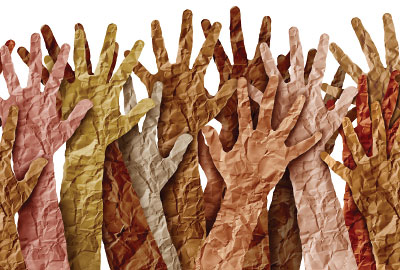Psychiatrists Unveil Anti-Racism Tool
Abstract
The SMART tool enables staff at community mental health centers to assess the extent to which their organizational and clinical processes are affected by racism and develop an improvement plan to address areas for growth.

In the wake of the 2020 protests for social justice that occurred in the weeks following the killing of George Floyd, organizations across the nation began looking inward to see how they might be consciously or unconsciously perpetuating structural racism. The American Association for Community Psychiatry (AACP) was no exception, and the result of this effort led to the development of a tool specifically designed to help community mental health centers carry out anti-racism work. The Self-Assessment for Modification of Anti-Racism Tool (SMART) enables centers to quantify the extent to which their organization is affected by racism, and to use that information to implement concrete organizational change.
Members of AACP involved in the development of SMART discussed the tool at the 2021 virtual Mental Health Services Conference.
Rachel Talley, M.D., a clinical assistant professor of psychiatry at the University of Pennsylvania, noted in her presentation that several medical groups have already developed resources to help professionals practice in a way that promotes equity among all patients. For example, a group of universities in western Canada developed EQUIP, a set of standards to reduce racial disparities in primary care and emergency department settings.
What makes SMART unique, however, is that the tool emphasizes scenarios that take place in community mental health centers, Talley said.
The SMART assessment includes 29 questions organized into five sections:
Workforce (includes questions about practices related to hiring, recruitment, retention, and promotion)
Workplace culture (includes questions about the degree to which staff and patients feel safe talking about racism)
Clinical care (includes questions about the tracking of disparities in diagnoses, treatment, and patient engagement and satisfaction)
Patient outcomes (includes questions about the impact of racism on functional and clinical outcomes)
Community advocacy (includes questions about the extent to which organizations partner with individuals in the local criminal justice system, child protective services, and others to address racial disparities in outcomes)
The tool allows groups to respond to each question based on a five-point scale related to how consistently the mental health center tracks and addresses a potential disparity. For example, one clinical care question asks: To what extent does your organization track racial disparities in the degree to which individuals with treatment-resistant psychosis are provided access to—and receive—clozapine, and to what extent do you ensure that any disparities are addressed?
How Does SMART Work?
The Self-Assessment for Modification of Anti-Racism Tool (SMART) features 29 questions on structural racism within five categories relevant for community mental health centers: workforce practices, workplace culture, clinical care, patient outcomes, and community advocacy. A sample question and the five-point assessment response are below.
To what extent does your organization track and address potential racial disparities in diagnosis among adult patients (e.g., disproportionate diagnosis of schizophrenia vs. mood disorders among certain racial groups)?
We don’t track this and have not addressed it.
We do track this, at least somewhat, have identified disparities, but have not made progress addressing them.
We do track this fairly well, have identified disparities, and have made a small amount of progress in addressing them.
We do track this consistently, have identified disparities, and have made significant progress.
We do track this consistently, and we have made processes in place to ensure that no disparities exist.
Other areas addressed in SMART include the disparate use of restraints, the presence or absence of a formal response for addressing incidents of discrimination, and how frequently a center collaborates with outside agencies such as law enforcement.
Sosonmula Shoyinka, M.D., M.B.A., the chief medical officer at the Philadelphia Department of Behavioral Health and Intellectual Disability Services, noted that the topics covered in SMART are far from complete. “Disparity is driven by discretion, and it can occur whenever there is a choice to be made,” he said during the session.
AACP focused SMART on topics that have a solid evidence base for widespread disparity (for example, clozapine prescribing rates and the percentage of Black individuals in leadership positions), could be monitored feasibly, and could be improved once identified.
SMART seeks to improve organizational processes and not single out any individual people or groups, Kenneth Minkoff, M.D., a senior systems consultant at ZiaPartners Inc., told session attendees. “The tool is about large-scale change,” he said.
SMART is a self-directed tool, Minkoff noted. To get the most out of the tool, a community mental health center would first have to form a diverse team (team members should be demographically and hierarchically diverse) to honestly rate their center’s performance in each area. After that, AACP recommends that the SMART team picks three areas for quality improvement, develops a plan to reduce disparities in these areas, and follows up to assess progress in these areas six to 12 months later.
The SMART tool is in a pilot/early adopter phase, Talley noted. AACP is encouraging groups that try the tool to report their experience and next steps. “We want to know what elements of SMART work and more importantly, what doesn’t work,” she said.
“After George Floyd, everyone wanted to do something,” Minkoff added. With this tool, organizations now have a path to follow-up. “You can turn your good intentions into meaningful action.” ■
The Self-Assessment for Modification of Anti-Racism Tool is posted here.



